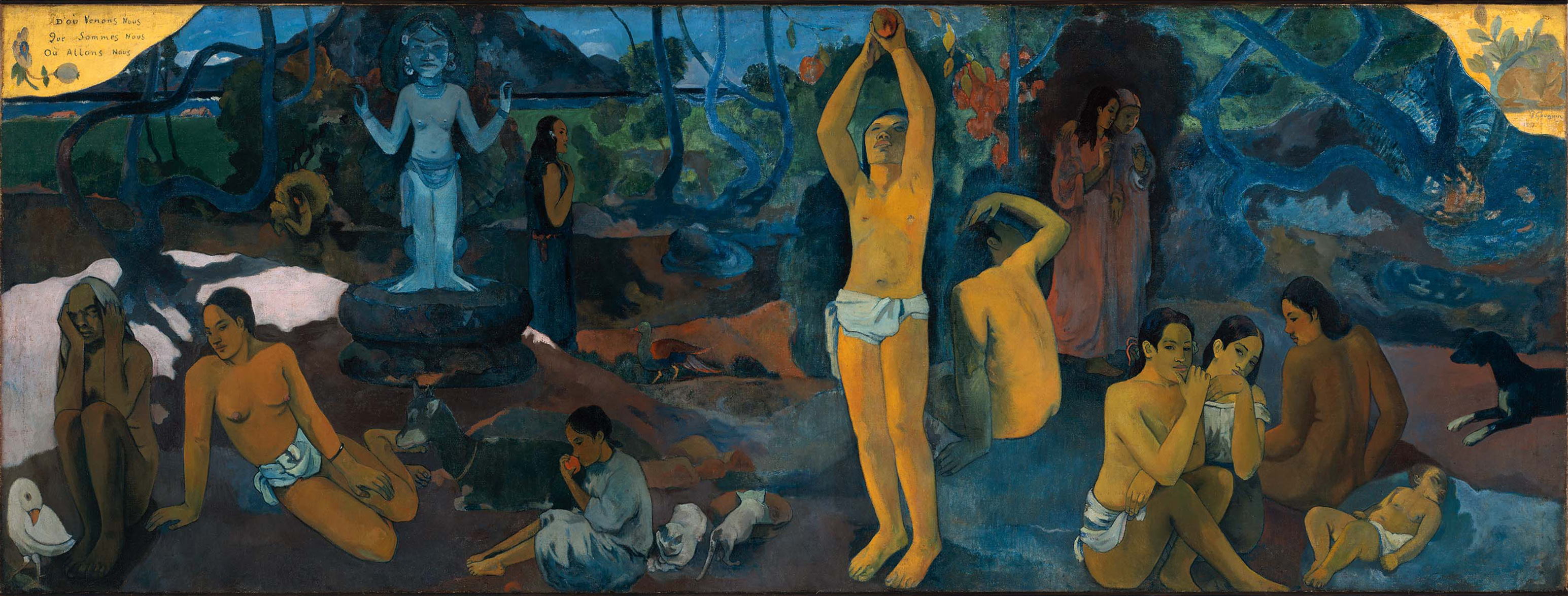D'où Venons Nous? Que Sommes Nous? Où Allons Nous?
– Publicerad den 6 February 2019

I recently found myself watching a documentary on the French artist, Paul Gauguin, who was one of my favourites in my younger years. It got me thinking about the artist who was driven by ideas and a desire to create something new and who went all-in, and about the inspiration we can draw from his work today.
What was it that interested me as a young person, was it the art or the particularly remarkable life story? Among other things, Gauguin was living with Vincent van Gogh in Arles when the latter cut off his ear, and later left ‘civilisation’ for Polynesia. Gauguin was hardly a role model for life success – he ended his days tragically in the South Pacific, sick and destitute. However, his ingenuity and his drive to constantly explore art and create new works is poignant. A persistent question: can and should we separate the work from the person?
There are countless Gauguin biographies and portrayals such as the Kon-Tiki explorer, Bengt Danielsson’s Gauguin in the South Seas and William Somerset Maugham’s fictional The Moon and the Sixpence (I wrote about both of these on my book blog on 16 October 2014). However, Gauguin is best known for his paintings from the South Pacific. One of these marvellous paintings is titled D'où Venons Nous? Que Sommes Nous? Où Allons Nous? (Where do we come from? Who are we? Where are we going?). It was painted in 1897 and currently hangs at the Museum of Fine Arts in Boston.
I used this work as an introduction to my associate professorship lecture, to explain the structure, and I would like to use it again.
We can analyse and reflect on the questions about where we come from and where we are, however, we can actually have an impact on where we are going. And this is where, for us at LTH, it is worth revisiting our dreams and discoveries. How do we move forward at LTH and where are we going? How do we explore and find new ground with the same drive as Gauguin?
At LTH, we create and explore, to benefit the world and to improve the human condition. ‘We’ are students, researchers, and employees from all corners of the world and all with different backgrounds and qualifications. This mix or diversity is a strength! When our expertise and points of view intersect, we achieve creative development. I am very proud of our joint creative force, of how we ask questions and tackle these and ensure they are of benefit to society.
During the year that has just started, I therefore hope that, together, we can open our minds. Can we be even braver, use something we already know about yet create something entirely new?
In times when conservative, nationalistic forces are reaping success, it is important for us to come together and work collaboratively. We at LTH are an important force in improving people’s lives, and through our dreams and our hard work we can have an impact on where we are going!
Viktor Öwall
Dean of LTH
PS I think you should be careful not to impose your interpretation of art on other people. To refresh your ideas and make further discoveries – think about what you like and are inspired by! Maybe it comes from the rich art treasures at LTH that we have written about previously (in Swedish). However, for some, art is not a source of inspiration, and in this case, I hope you find a source of inspiration elsewhere.
